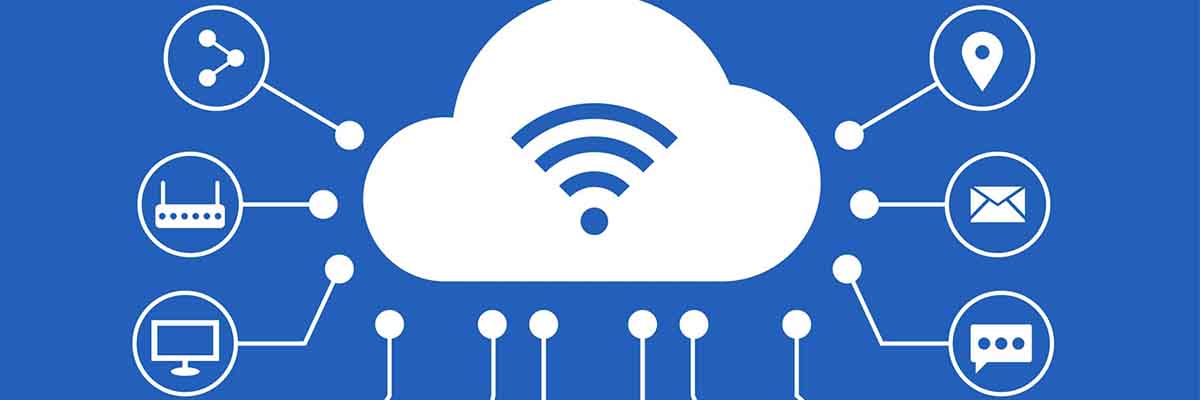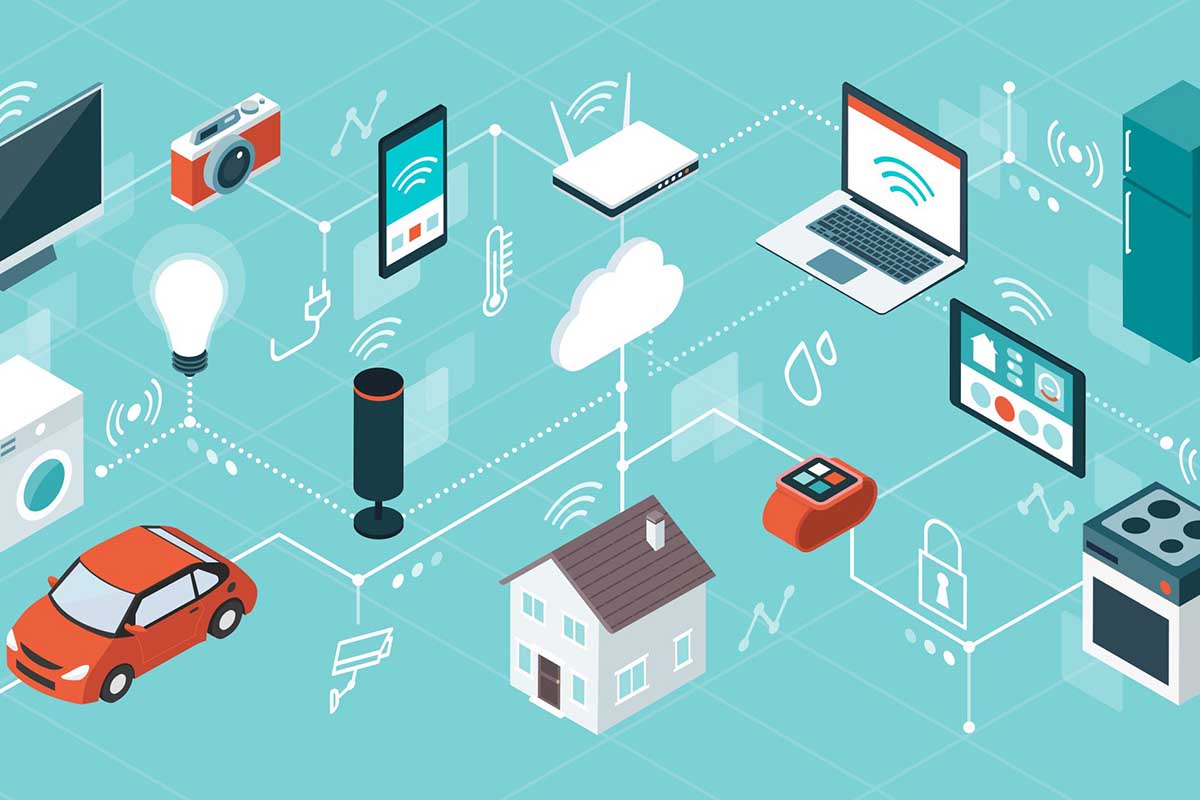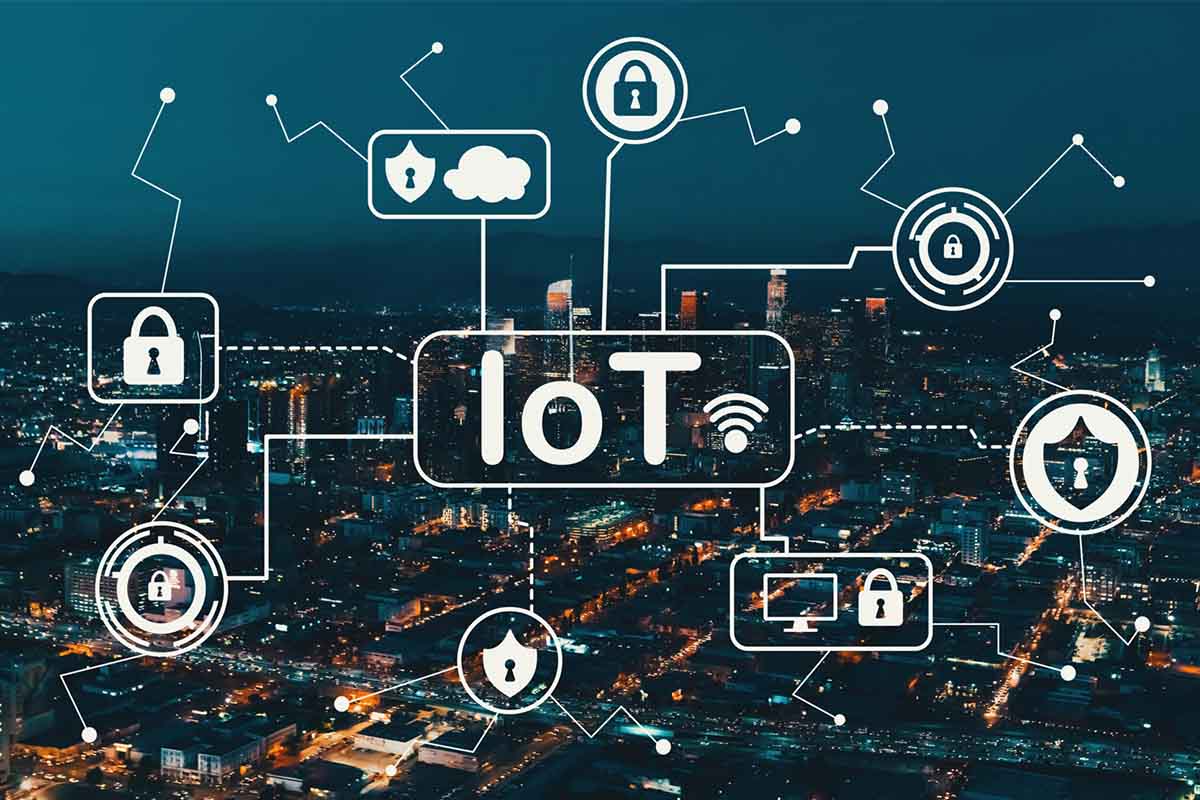The Internet of Things (IoT) is a transformative technological paradigm that has reshaped how we interact with our environment, both natural and man-made. IoT refers to the network of physical objects – “things” – embedded with sensors, software, and other technologies for the purpose of connecting and exchanging data with other devices and systems over the Internet. This comprehensive exploration delves into the origins, evolution, and current landscape of IoT.
The Internet of Things
IoT extends internet connectivity beyond standard devices like computers and smartphones to a diverse range of everyday objects and industrial equipment.
IoT involves embedding microchips and sensors in physical objects, turning them into ‘smart’ devices capable of gathering and transmitting data.
Core technologies of the Internet of Things
Radio Frequency Identification Technology: A Cornerstone in IoT Evolution
In the realm of the Internet of Things (IoT), Radio Frequency Identification (RFID) technology emerges as a pivotal component, garnering significant attention for its role in IoT’s development. At its core, RFID is a streamlined wireless system comprising two primary elements: an interrogator (commonly known as a reader) and numerous transponders (referred to as tags).
Composition and Functioning of RFID Tags
Structure of Tags: Each RFID tag is made up of a coupling element and a chip. The chip houses a unique electronic code, which is crucial for long-term identification purposes.
Attachment and Identification: These tags are affixed to objects to identify and track them. Each tag’s unique electronic code acts as a digital fingerprint, differentiating one object from another.
The Interrogator: The RFID Reader
Role of the Reader: The reader serves as the device that communicates with the tags. It sends out a signal that activates the tags and then reads the information transmitted back.
Radio Frequency Communication: The tags respond by sending radio frequency signals back to the reader, carrying the pertinent information about the tagged object.
RFID as the Voice of Objects
Enabling Traceability: RFID technology essentially bestows objects with the ability to “communicate.” This attribute is central to the IoT, providing a traceability feature that is invaluable.
Real-Time Location and Monitoring: With RFID technology, it becomes feasible to accurately track the precise location of items and monitor their surrounding conditions. This ability is crucial in various applications, from supply chain management to personal item tracking.
The Significance of RFID in IoT
Foundation for Smart Interactions: RFID forms the bedrock of many smart, automated systems in IoT. It allows for seamless interaction between physical objects and digital systems, thereby enabling automated data collection and analysis.
Versatility and Adaptability: The technology is versatile and can be adapted to a broad range of environments and applications, enhancing its utility in the IoT ecosystem.
RFID technology is more than just a component of the IoT; it is a fundamental enabler that allows objects to interact within the digital realm. Its ability to provide traceability and real-time monitoring is indispensable in realizing the full potential of IoT. As we continue to innovate and integrate technology into our daily lives, RFID’s role in facilitating seamless, intelligent interactions between the physical and digital worlds will only become more pronounced, driving further advancements in the dynamic field of IoT.

Sensor Networks and the Role of Micro-Electro-Mechanical Systems (MEMS)
Micro-Electro-Mechanical Systems, commonly abbreviated as MEMS, represent a groundbreaking advancement in the realm of integrated microdevices. This technology synthesizes various components – microsensors, micro actuators, signal processing and control circuits, communication interfaces, and power supplies – into a cohesive microsystem. The primary aim of MEMS is to unify the processes of data acquisition, processing, and execution, thereby creating a multifunctional microsystem that can be integrated into larger-scale systems. This integration significantly elevates the levels of automation, intelligence, and reliability within these systems.
The Composition of MEMS
Microsensors and Micro Actuators: These components form the core of MEMS, enabling the system to interact with its environment by sensing and responding to various stimuli.
Signal Processing and Control Circuits: These circuits analyze and interpret the data collected by the microsensors, facilitating appropriate responses or actions.
Communication Interfaces: These allow MEMS to connect and communicate with other systems or networks, transferring data and instructions.
Power Supplies: Essential for maintaining the autonomous operation of MEMS, these components ensure a steady energy supply to all system parts.
The Functionality of MEMS
Integration of Key Processes: MEMS integrate critical functions like information acquisition, processing, and execution into a single system, enhancing efficiency and effectiveness.
Formation of Multi-functional Microsystems: By combining these elements, MEMS form versatile microsystems capable of performing a wide array of functions within a larger system.
Enhancing Ordinary Objects: MEMS technology breathes new life into everyday objects, endowing them with capabilities like data transmission, storage functions, and specialized operating systems.
Expanding Connectivity: With their inherent capabilities, MEMS contribute to the formation of extensive sensor networks, wherein a multitude of devices and systems are interconnected, sharing and analyzing data.
MEMS technology stands at the forefront of modern sensor networks, offering unparalleled versatility and integration capabilities. By transforming ordinary objects into interconnected, intelligent components of larger systems, MEMS play a pivotal role in advancing automation and system intelligence. As we progress further into an era of technological convergence, the influence of MEMS in creating sophisticated, responsive, and interconnected systems is set to grow, marking a significant leap forward in our approach to technology and its applications.
Machine-to-Machine (M2M) System Framework
Machine-to-Machine, commonly abbreviated as M2M (and at times extending to Machine-to-Man), is a concept centered around the intelligent interaction of machine terminals within a networked environment. This technology is pivotal in enabling smart control over objects, enhancing both efficiency and functionality in various applications.
Core Components of M2M Technology
Machine Terminals: These are the primary components in M2M systems, comprising various devices and sensors that perform specific functions and gather data.
M2M Hardware: This includes the physical devices and modules that enable machines to connect and communicate with each other.
Communication Network: The network is the backbone of M2M technology, facilitating seamless data transfer among different machine terminals. This could be via wireless or wired networks, cellular, Wi-Fi, or other communication technologies.
Middleware: This layer of technology acts as a bridge between the hardware and the applications, processing the data transmitted across the network and ensuring its compatibility with different applications.
Applications: These are the end-use software that utilizes the data collected and processed by M2M systems for various practical purposes, from automation in manufacturing to home security systems.
The Role of Cloud Computing and Intelligent Networks
Data Processing and Decision Making: Leveraging cloud computing platforms, M2M systems can process vast amounts of data obtained from machine terminals, making informed decisions based on this data.
Intelligent Control and Feedback: The intelligent network facilitates not just the collection and processing of data but also enables the system to modify the behavior of objects for control and provide feedback. This makes M2M systems adaptive and responsive to changing conditions or requirements.
The M2M system framework represents a significant leap in how machines and systems interact and communicate. By harnessing the power of intelligent networks and cloud computing, M2M technology not only facilitates the efficient control and monitoring of various processes but also opens up new possibilities for innovation and improvement in numerous fields. As technology continues to advance, the scope and impact of M2M systems are poised to expand, further integrating into the fabric of our daily lives and industrial operations.
Conclusion
The Internet of Things represents a leap forward in our ability to gather, analyze, and act upon data from our environment. From its conceptual origins to its present-day applications, IoT has evolved into a vast network of devices that transcend traditional boundaries of technology and offer new opportunities and challenges. As IoT continues to mature, its integration with other cutting-edge technologies like AI, cloud computing, and big data analytics will further redefine the landscape of modern technology, influencing virtually every aspect of our lives. The future of IoT holds immense potential for innovation, efficiency, and improved




